The Great Migration Path
Positioned only meters from the Mara River, your only reaction is to stare in complete disbelief as you come to terms with that which is unfolding before your very eyes. It’s not just the worlds greatest mammal migration but the fate of approximately 1.4 million animals that hangs in the balance, as they move in a clockwise circular pattern between the Serengeti savannah in Tanzania and the golden plains of the Masai Mara in Kenya. Herds of wildebeest, zebra and gazelle cover a great migration path of over 1 800 miles in search of lush grasses that have sprouted from the blessing of rainfall. This remarkable quest is not without its challenges though. These highly guarded animals are followed closely by a number of predators, looking for a window of opportunity...but the deadliest of obstacles in their path has to be the river crossings. Facing the possibility of being eaten or drowned, the annual migration is undoubtedly the most beautiful and yet the cruelest wildlife spectacle to be witnessed on earth!
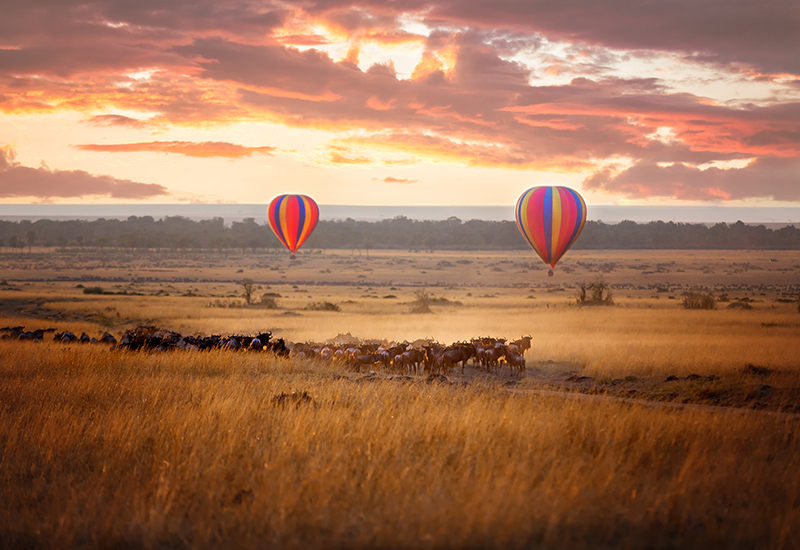
Hot air balloon safaris offer breathtaking views of the Masai Mara and its magnificent wildlife.With no exact beginning or end, the Wildebeest and Zebra Migration can be seen throughout the year in the Serengeti and Ngorongoro conservation regions of Tanzania, as well as the Masai Mara in Kenya. We’ve put together a rough guideline based on the general movement pattern of these incredible animals, changing rainfall patterns make predicting the Migration quite impossible but this should give you an idea of where the herds are likely to be.
Great Migration Path - December to March
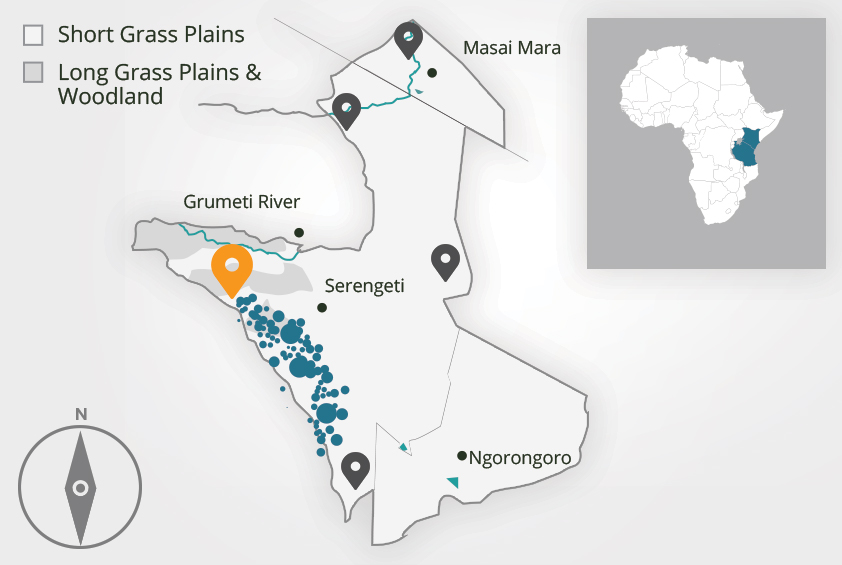
The Serengeti National Park and Ngorongoro Conservation Area are arguably the most celebrated wildlife sanctuaries in the world. During the months of December through March, the vast plains of the southern Serengeti and the Conservation Area are teeming with large herds of wildebeest, zebra and gazelle. In the calving season which occurs from late January through to mid-March, the herds concentrate at the Ndutu and Salei plains located in the southern Serengeti and Ngorongoro Conservation Area respectively. The arrival of their young attracts the attention of numerous predators such as lion, cheetah and hyena. Did you know that wildebeest calves are able to stand up and run with the rest of the group within 7 minutes of being born? This is crucial for their survival. Want to be part of the action? Discover the Serengeti.
Great Migration Path - April to May
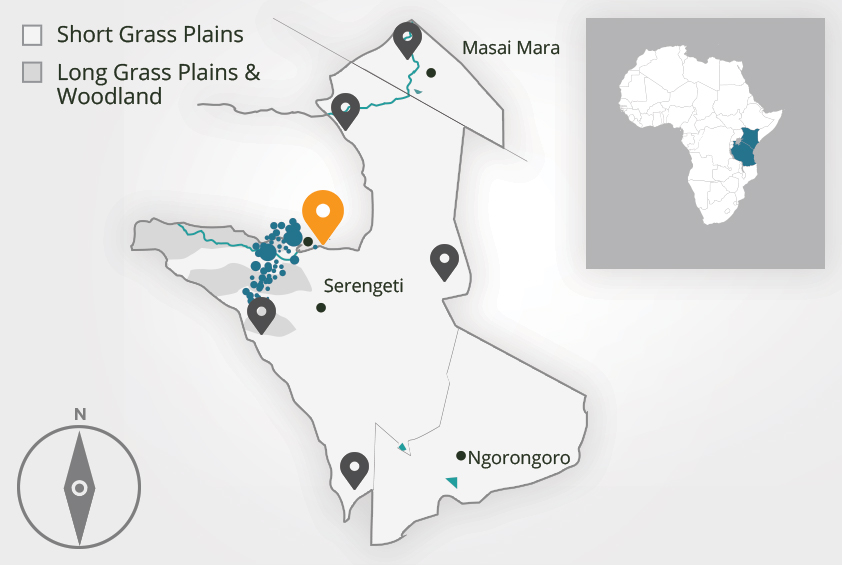
During the months of April and May, the consumed plains are unable to sustain the endless herds. The migration, sweeping west and north, moves from the short grass plains of the southern Serengeti and Ngorongoro Conservation Area to the long grass plains and woodland area of the Serengeti’s Western Corridor, almost reaching Lake Victoria.These months are when the Serengeti receives its long rains and is considered to be the off-peak season for wildlife viewing in East Africa, with many roads often impassable.A smaller herd of approximately 250 000 wildebeest and zebra reside in the Loita Hills which is located in the southern Great Rift Valley of Kenya. The herd generally begins their journey in May when the grass has dried up, traveling from the Loita Plains to the north-eastern corner of the Masai Mara. The movement of this herd is often referred to as the “Little Migration”.Want to witness the Little Migration?? Take me there.
Great Migration Path - June

By the end of May, the wildebeest have exhausted the once abundant pastures of the Western Corridor and the herds must now move further north. The wildebeest migration is often slowed down when the wildebeest reach the south side of the Grumeti River. Although the river doesn’t flow continuously, there are a number of small pools and channels that the animals need to cross. Although not as spectacular as the Mara River crossing, it’s still a sight to behold as the wildebeest congregate into a larger group before attempting to cross the crocodile-infested Grumeti River. Entering the Lamai Wedge and the Mara Triangle via the northern Kogatende region of the Serengeti National Park, the breeding season begins during the months of May through June. This is a transitional period between the rainy season and the dry season.Want to? Journey to the Masai Mara.
Great Migration Path - July to October
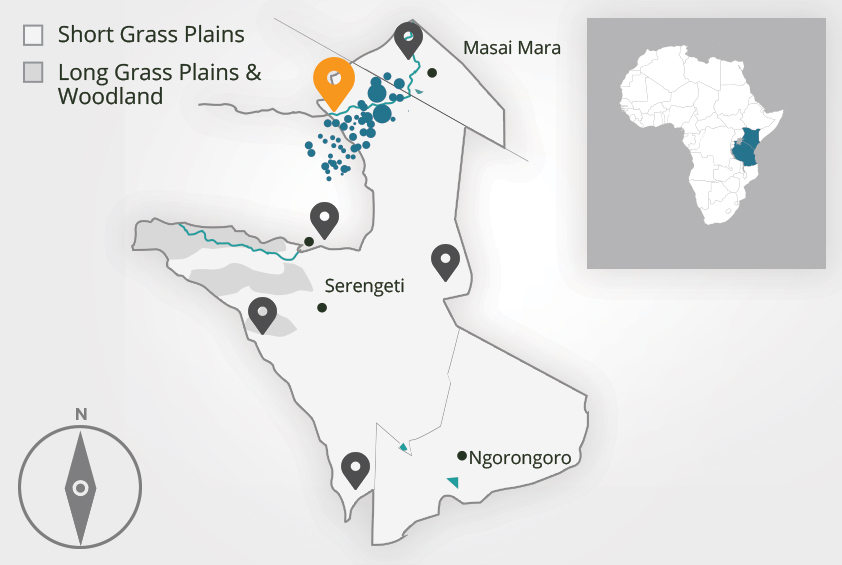
By July the countless herds have amassed along the swollen Mara River which is the final barrier between the animals and the short sweet grasses of the Masai Mara. Sometimes the crossing place they have chosen is shallow allowing the majority of animals to pass safely. In other areas, the waters boil with drowning wildebeest and slashing crocodiles. Between July and October the wildebeest reside in the Masai Mara.The Loita Hills residents have now met up with the larger Migration herd where they will reside side by side in the Masai Mara. The herd from Loita Hills will generally remain in the Mara until March when they will make their way back to their homeland. Want to experience the spectacle? Tell me more.
Great Migration Path - November
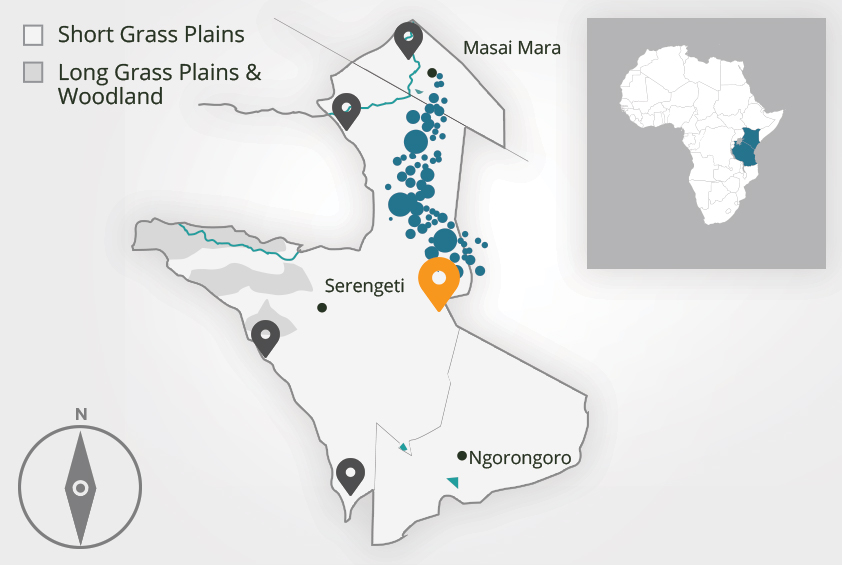
The arrival of the lighter, short rains calls the migration southward. As November ends the migration is making its way back to the southern Serengeti and early in the new year they once again give birth. The circle of life is complete.Get close to nature? Escape to the Serengeti.Knowing how the Wildebeest Great Migration path works makes the question of where to go and when to witness one of the greatest wonders of the natural world, much easier to answer. With a number of well-placed accommodation options in the Masai Mara and Serengeti parks, you have the opportunity to experience this natural phenomenon at different times of the year. Let one of our Safari Experts help you plan a flawless Wildebeest Migration Safari that suits your travel needs.
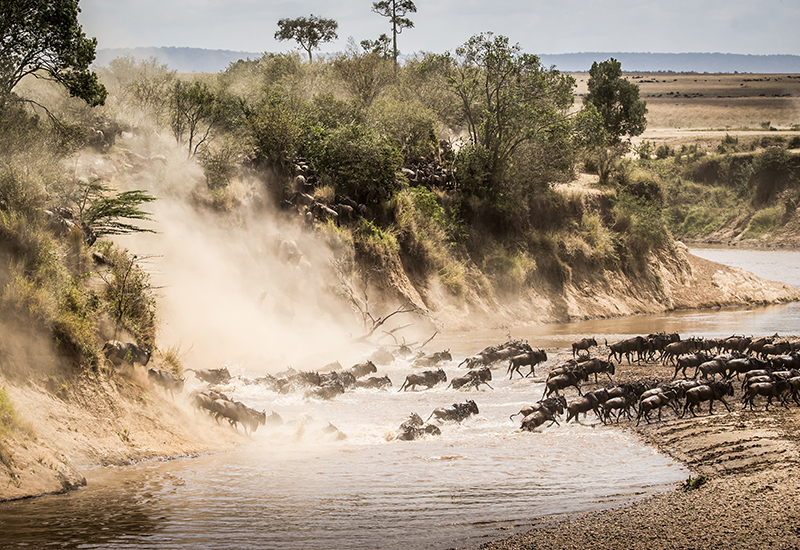
Wildebeest crossing the crocodile-infested Mara River.

